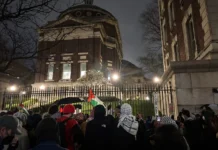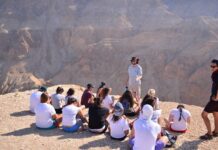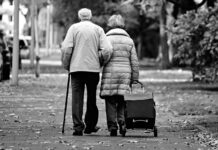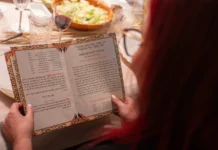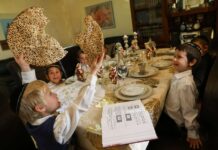Members of Congregation B’nai Abraham in Hagerstown are backing the idea of a park across from the synagogue to honor Thomas Kennedy, a Washington County state lawmaker who pushed for the right of Jews to hold public office in the 19th century.
The park would be developed on the city-owned “Massey” property on East Baltimore Street, where two blighted buildings were demolished about two years ago.
Officials have considered possible uses for the land, including parking for a possible repurposed showroom building nearby, relocation of an access to parking for the Washington County Free Library, or a park, according to City Engineer Rodney A. Tissue.
Supporters of the project said honoring Kennedy through a statue at the park would represent a “courageous pursuit of liberty.”
Jews could not hold public office in Maryland, which caught the attention of Kennedy, a local member of the state legislature.
Kennedy drafted a law to allow Jews to hold public office, an effort that met with failure for years before it was passed in 1826.
Rabbi Ari Plost from Congregation B’nai Abraham; Monda Sagalkin, president of the congregation; Tom Riford, who has long been impressed with Kennedy’s life; and sculptor Toby Mendez, who would create the statue, presented the park plan to Mayor Robert E. Bruchey II and the Hagerstown City Council during a work session Tuesday afternoon.
The council was supportive of the city providing $5,000 toward the initial design of the statue and a resolution to establish the park, known as Thomas Kennedy Park.
Park supporters said the resolution is needed to raise money for the project at the state level.
Mendez will design a maquette, or a preliminary model, which will cost $10,000.
Plost and Sagalkin said in a July 12 letter to Tissue that “significant funds” will have to be raised for the statue, and they anticipate other money will come from private donors and institutional sources.
Mendez said after the meeting that it is too early to say exactly how much the project would cost.
Tissue said development of the park would include construction of a plaza. Once that occurs, the site would be maintained as a city park, Tissue said.
Mendez’s works have included the six Hall of Fame Baltimore Orioles at Camden Yards, a Thurgood Marshall memorial in Annapolis and his bas-relief sculpture “Our Journey Transports us through Time” at the library.
An enthusiastic supporter of the proposed park, Mendez has offered an in-kind donation to lower the overall cost of the statue, Tissue said.
“Such a statue and park will serve as a dedication to the greatest single accomplishment to ever benefit Jewish Americans in Maryland,” Sagalkin and Plost said in their letter to Tissue.
Kennedy was more than a lawmaker, also working as a poet and a publisher who started and later became editor of the Hagerstown Mail newspaper, which became today’s Herald-Mail, Riford said.
He said Kennedy had never met a Jewish person in his life, and there were only about 150 in the state when he worked on his bill.
But Kennedy believed it was not fair that Jews could not hold public office, Riford said.
“He didn’t understand why Maryland the free state wasn’t entirely free,” he said.
Plost said Jewish members of the Hagerstown community have a rich legacy of civic, business and artistic efforts.
He acknowledged city Councilman Lewis C. Metzner, who was the past president of the congregation as was his father.
Metzner said he sees the park as only the “tip of the iceberg” of celebrating Kennedy’s legacy, while project officials said they see the park as a “springboard” toward that effort.

